The Runcitruncated 5-cell
The runcitruncated 5-cell is a uniform polychoron bounded by 30 cells (5 truncated tetrahedra, 10 hexagonal prisms, 10 triangular prisms, and 5 cuboctahedra), 120 polygons (40 triangles, 60 squares, 20 hexagons), 150 edges, and 60 vertices. It may be constructed by radially expanding the truncated tetrahedral cells of the truncated 5-cell outwards and filling in the gaps with cuboctahedra, hexagonal prisms, and triangular prisms.
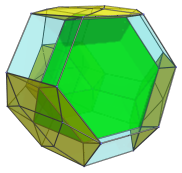
Structure
We shall explore the structure of the runcitruncated 5-cell by means of its parallel projection into 3D.
The Northern Hemisphere
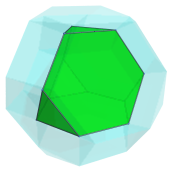
This image shows the nearest truncated tetrahedral cell to the 4D viewpoint. For clarity, we omit edges and vertices from all the other cells, and render the other cells in the light transparent color.
The hexagonal faces of this nearest truncated tetrahedron are joined to 4 hexagonal prisms, as shown below:
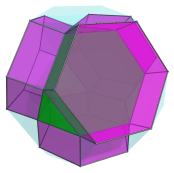
Straddling these hexagonal prisms are 6 triangular prisms, which share an edge with the nearest truncated tetrahedron:
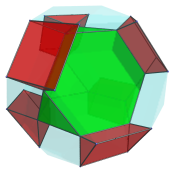
The triangular faces of the nearest tetrahedron are joined to 4 cuboctahedra:
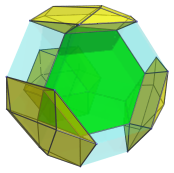
These cuboctahedra appear slightly flattened, because they are seen at an angle. They are perfectly uniform cuboctahedra in 4D.
The next image shows all of these cells together:
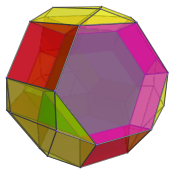
These cells are the “northern hemisphere” cells of the runcitruncated 5-cell.
The Southern Hemisphere
The farthest cell from the 4D viewpoint lies on the opposite “pole” of the runcitruncated 5-cell. It is a cuboctahedron:
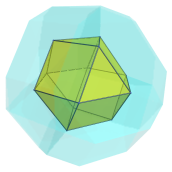
The 6 square faces of this cuboctahedron are joined to 6 hexagonal prisms:
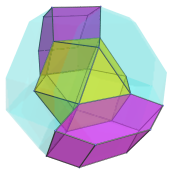
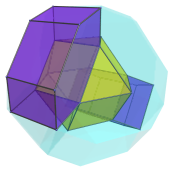
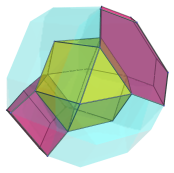
These hexagonal prisms look slightly flattened because they are seen at an angle. They are perfectly uniform in 4D. The following image shows all of them together:
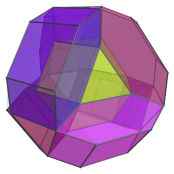
Four of the cuboctahedron's triangular faces are joined to triangular prisms, as show below:
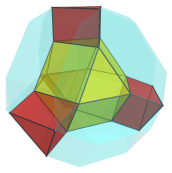
The other four of the cuboctahedron's triangular faces are joined to 4 truncated tetrahedra:
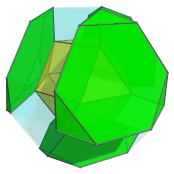
The next image shows all of these cells together:
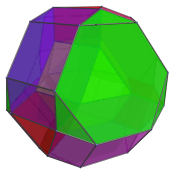
Summary
In summary, the northern hemisphere of the runcitruncated 5-cell has 1 truncated tetrahedron, 4 hexagonal prisms, 6 triangular prisms, and 4 cuboctahedra. The southern hemisphere has 4 truncated tetrahedra, 6 hexagonal prisms, 4 triangular prisms, and 1 cuboctahedron. This makes a total of 5 truncated tetrahedra, 10 hexagonal prisms, 10 triangular prisms, and 10 cuboctahedra.
The 5 truncated tetrahedra correspond with the 5 cells of the 5-cell, from which the runcitruncated 5-cell is derived; and the hexagonal prisms correspond with the 10 faces of the 5-cell. The 5 cuboctahedra correspond with the 5 vertices of the 5-cell, or, equivalently, the 5 cells of the dual 5-cell; and the 10 triangular prisms correspond with the 10 edges of the 5-cell (equivalently, the 10 faces of the dual 5-cell).
Coordinates
The Cartesian coordinates of the runcitruncated 5-cell, centered on the origin and having edge length 2, are:
|
|
Simpler coordinates can be obtained in 5D as all permutations of coordinates of:
- (0, √2, 2√2, 2√2, 3√2)
The 4D coordinates are derived by projecting these 5D coordinates back into 4D using a symmetric projection.




